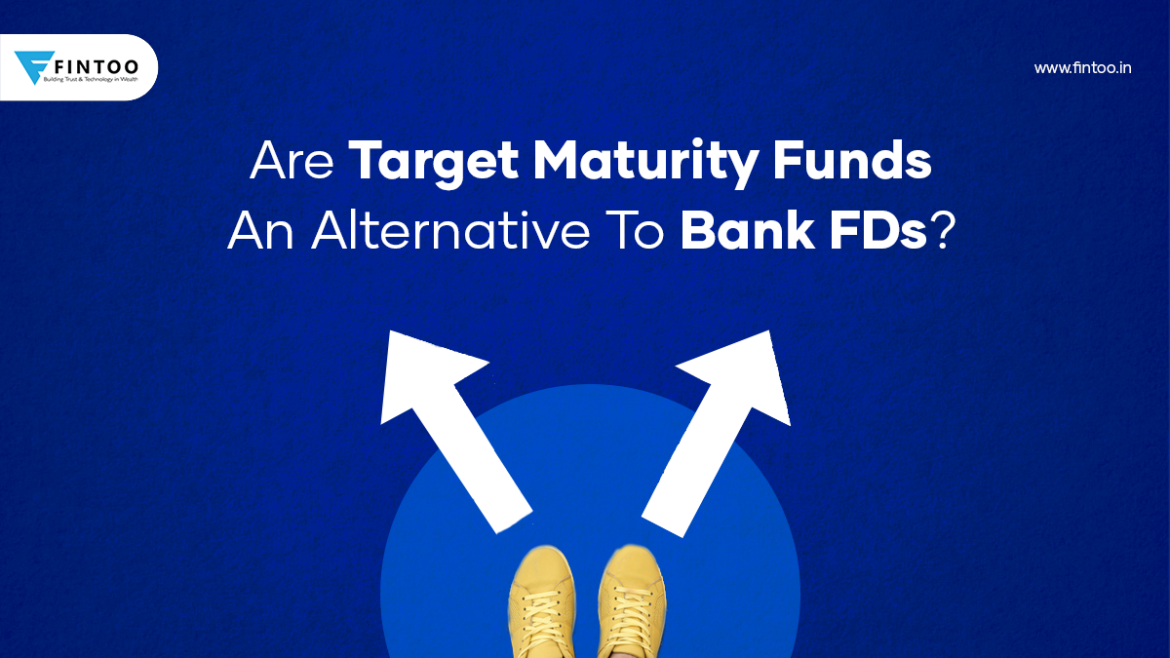

Fixed deposits are one of the oldest investment options that are considered safe, assured, and stable. Currently, on account of the rising inflation, the central bank of India has increased the repo rate quite a few times. As on 8th February 2023, the repo rate was escalated to 6.50%. While this has increased the burden of loan holders, it improved the interest rates received by bank fixed deposit account holders.
Due to this, fixed deposits are now providing satisfactory returns for investors in the traditional investment space. However, in recent years, another low-risk investment alternative, known as “Target Maturity Funds,” or TMF, has been challenging the scope of bank FDs. So, even though, at present, the FD interest rates have increased, let us understand the meaning of TMFs and whether they can provide better benefits than bank FDs under any economic scenario.
Target Maturity Funds (TMFs)
Target Maturity Funds are passively managed debt fund investments. They invest in a mix of government securities, PSU bonds, SDLs, and high-quality papers, which makes them a relatively safe investment as compared to other non-traditional investments. TMFs track an underlying bond index. Being passively managed, they mirror the indexes of the bonds and, thus, have a low expense ratio. The Asset Management Company (AMC) provides investors with a diversified portfolio by investing in a wide range of bonds rather than just one. This also reduces the risk from your portfolio.
TMFs are an open-ended scheme with no lock-in period. They also have a predefined maturity date. This means that by investing in a TMF, you will receive a fixed rate of interest irrespective of the overall economic situation. But keep in mind that to benefit from this, you will have to hold your TMF till maturity. Investors usually apply the buy-and-hold strategy to derive maximum profits. Moreover, even though they have a fixed interest rate, they are still subject to credit risks or market risks.
Bank Fixed Deposits
Fixed Deposits are offered by banks at a pre-determined interest rate and tenure. They offer a higher interest rate than a savings account. To have a bank FD, you will have to invest a lump sum amount, on which you will receive compound interest by the end of your tenure. The duration of an FD ranges anywhere between 7 days to 10 years. If you withdraw your funds before maturity, you will be liable to pay the penalty. However, being a traditional investment avenue, it carries only negligible risk, which is why it is a trusted and commonly chosen investment option.
Are Target Maturity Funds better than Fixed Deposits?
To identify the better investment option, let us compare the two schemes on these parameters.
Risk
TMF: Contains risk as it is subject to credit risks and market risks. However, since they invest in debt securities, the risk is low.
FD: No risk, as it is not subject to market fluctuation. However, in the case of liquidation of a bank, the FD account holder’s money will be insured up to Rs. 5 Lakhs, inclusive of the principal and interest amount.
Deposit
TMF: You have the option to select lump sum or SIP.
FD: You can only make a lumpsum investment.
Tax
TMF: Short-term capital gains (less than 3 years) are taxed as per an individual’s slab rate, and long-term capital gains (more than 3 years) are taxed at 20% with the benefit of indexation.
FD: Taxes are applied on the interest earned as per the slab rate.
Tenure
TMF: TMFs can have a maturity date of anywhere between 1 to 15 years.
FD: Investment tenure for an FD ranges between 7 days to 10 years.
Returns
TMF: Investors get to lock in the current interest rate and hence receive a fixed income.
FD: Investors receive fixed returns that are not market-linked.
Withdrawal
TMF: Investors can withdraw anytime.
FD: If investors withdraw before the due date, then they will have to pay the penalty.
How to select between TMFs and FDs?
In order to ascertain the best scheme for you, understand your objectives and risk appetite. If you can hold your investments up to maturity, TMFs may be suitable for you since you can lock in the interest rate when the current market interest rates are high. Additionally, for a long-term investment, you can avail the benefit of indexation. However, if you are in the higher tax slab and invest in FDs, you won’t receive the benefit of indexation. So, for individuals with a medium to long-term investment horizon or who come under the higher tax slab, TMFs become quite ideal due to their decent returns and tax efficiency.
To Conclude
Both FDs and TMFs are reliable and low-risk investment options. Each one has a different investing style and approach. So, the best way to begin is to choose an investment scheme that matches your goals and preferences. Additionally, your choice of an investment may also depend on the tax bracket you fall into or for how long you’re willing to hold your investment.
Disclaimer: The views expressed in the blog are purely based on our research and personal opinion. Although we do not condone misinformation, we do not intend to be regarded as a source of advice or guarantee. Kindly consult an expert before making any decision based on the insights we have provided.
Related Posts
Stay up-to-date with the latest information.


